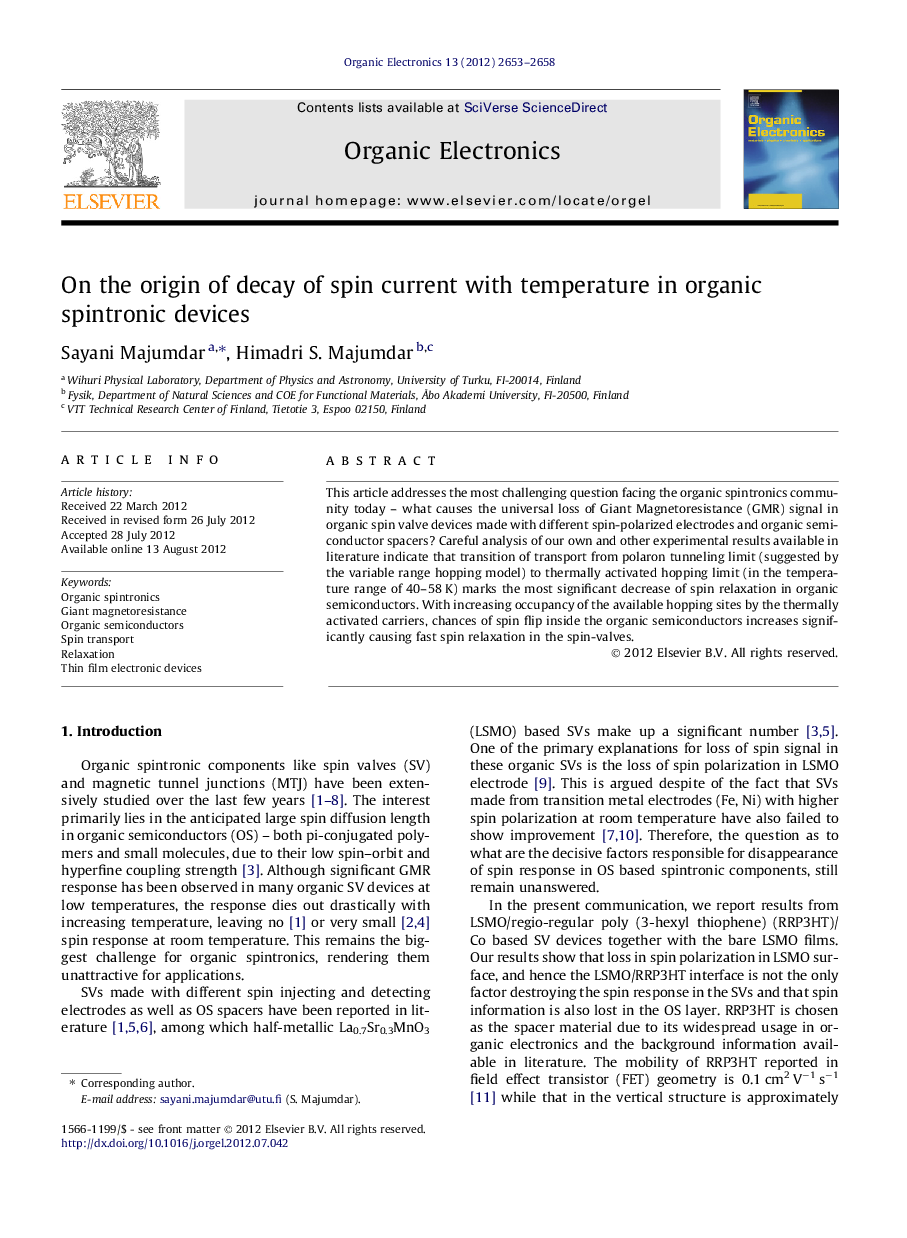| کد مقاله | کد نشریه | سال انتشار | مقاله انگلیسی | نسخه تمام متن |
|---|---|---|---|---|
| 1264054 | 972098 | 2012 | 6 صفحه PDF | دانلود رایگان |

This article addresses the most challenging question facing the organic spintronics community today – what causes the universal loss of Giant Magnetoresistance (GMR) signal in organic spin valve devices made with different spin-polarized electrodes and organic semiconductor spacers? Careful analysis of our own and other experimental results available in literature indicate that transition of transport from polaron tunneling limit (suggested by the variable range hopping model) to thermally activated hopping limit (in the temperature range of 40–58 K) marks the most significant decrease of spin relaxation in organic semiconductors. With increasing occupancy of the available hopping sites by the thermally activated carriers, chances of spin flip inside the organic semiconductors increases significantly causing fast spin relaxation in the spin-valves.
This article addresses the most challenging question facing the organic spintronics community today – what causes the universal loss of Giant Magnetoresistance (GMR) signal in organic spin valve devices made with different spin-polarized electrodes and organic semiconductor spacers? Figure in the left depicts loss of GMR signal with temperature of a typical organic spin valve device – La0.7Sr0.3MnO3 (LSMO)/region-regular poly(3-hexyl thiophene)/Co. Careful analysis of our own and other experimental results available in literature indicate that this decrease in MR with temperature is related to the clear transition of transport from polaron tunnelling limit (suggested by the variable range hopping model) to thermally activated hopping limit above 50 K inside the organic semiconductor spacers in these device structures (figure on the right). This transition marks the most significant decrease of spin relaxation in organic semiconductors and can, consequently, decrease the GMR response in the spin-valves. This is contrary to the common knowledge that the decrease in spin-polarization of the LSMO electrode at higher temperature is responsible for the loss in spin-valve response and spin relaxation in organic semiconductor is not significant at higher temperatures.Figure optionsDownload as PowerPoint slideHighlights
► GMR loss at room temperature is universal for all organic spin valves.
► Transition of transport from VRH limit to thermally-activated hopping observed in the temperature range of 40–58 K.
► Transition from VRH marks the most significant decrease of spin relaxation and GMR in organic spin-valve devices.
► Increased magnetic disorder due to interaction between trapped carriers and hyperfine field lead to spin-relaxation.
Journal: Organic Electronics - Volume 13, Issue 11, November 2012, Pages 2653–2658